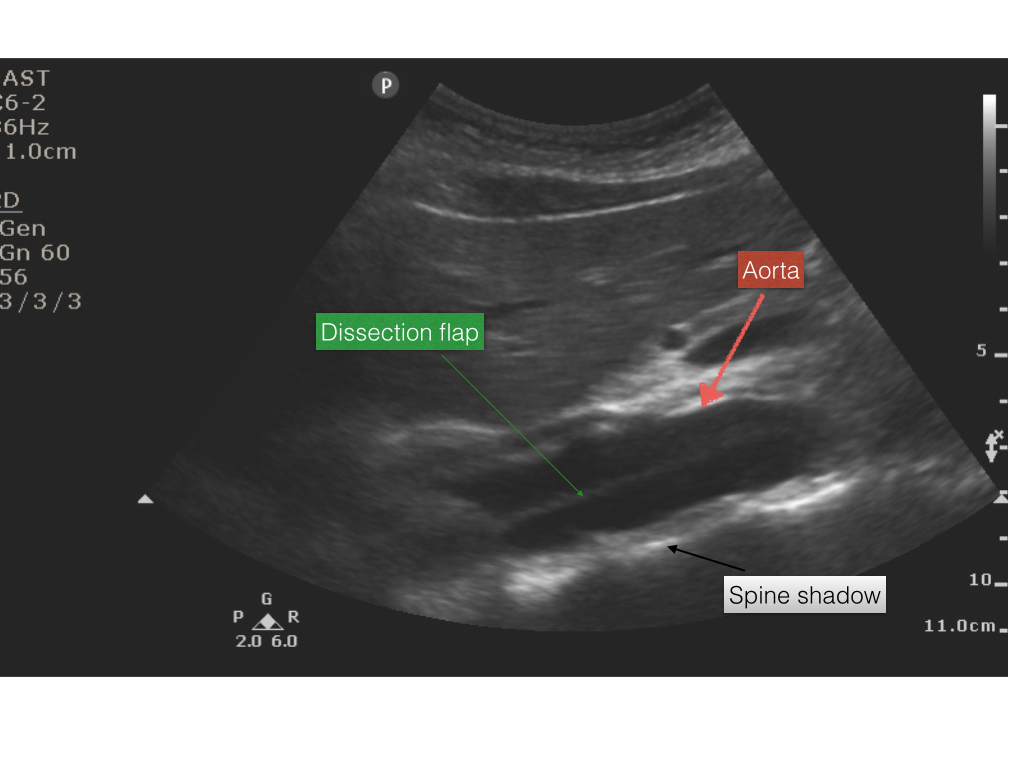Diagnosing an acute aortic dissection in a young female patient presenting with severe chest and back pain with bedside US and confirmed it with CT angiography (which showed an extensive Type A dissection). Patient was transferred for emergent cardiothoracic surgery.
Acute aortic dissection is a life-threatening, time-dependent emergency whose diagnose can be screened for and expedited by point-of-care (POC) ultrasound, as evidenced by numerous case reports in the literature. There are 3 locations where aortic dissection can be screened for on ultrasound – cardiac echo, suprasternal notch view, and abdominal aorta.
In this case, they used a curvilinear probe with the probe marker pointing to the patient’s head and placed it in the midline epigastric region of the abdomen to get a sagittal view of the aorta. In this view, the aorta will appear as a tubular structure above the spine shadow produced by vertebral bodies– note that no dilatation (aneurysm) can be appreciated here. A linear mobile structure is noted within the lumen of the aorta – this is the dissection flap.
Image 1

Video 1
The dissection flap can also be seen in the transverse (cross-sectional) view of the aorta, obtained by rotating the transducer to the patient’s right. In this view, the aorta and IVC lie adjacent to each other above the spine.
Video 2
POC Ultrasound does have some limitations. You cannot rule out a dissection if you don’t see a flap (i.e., it is not a good rule-out test) so if clinical suspicion is high, you should get further imaging – CT, MRI, TEE. Also ultrasound cannot help with determining if dissection is acute or chronic, or if there is a “leaking” aorta – as the retro-peritoneum is not well-imaged on ultrasound.
Additional references:
1. Kaban, J. and Raio, C. (2009), Emergency Department Diagnosis of Aortic Dissection by Bedside Transabdominal Ultrasound. Academic Emergency Medicine, 16: 809–810. doi: 10.1111/j.1553-2712.2009.00448.x
2. Budhram, G. and Reardon, R. (2008), Diagnosis of Ascending Aortic Dissection Using Emergency Department Bedside Echocardiogram. Academic Emergency Medicine, 15: 584. doi: 10.1111/j.1553-2712.2008.00106.x
Date: July 2014

